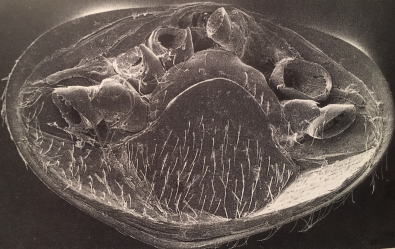Varro resistance, the measurements of my breeding peoples for the breeding year 2020
The bee year 2018
In this breeding year I have formed over 100 offshoots. The breeding peoples came from 2 lines, all of which have a varro resistance index VRI * of no more than 25 points.
*The VRI is the ratio of daily mite decay before defoliation to actual defoliation after defoliation. The lower the VRI index, the better the Varroa resistance. More at the end of the article.
These peoples were last demilified with formic acid on September 12, 2018 and were sintered to 2 units (Freudenstein measure). For 10 months, from 12 September 2018 to the end of July 2019, no demilification was carried out and no drone brood was taken.
The selection of these colonies in the bee year 2019
Within the framework of the selection, the following peoples divorced:
✓ Peoples with delayed release of hives
✓ Peoples, who were restless or almost aggressive
✓ Peoples, who have raved
✓ Peoples, which only reached the standard average in the honey yield
✓ Peoples, which Slightly weaker at the end of July
✓ Peoples who achieved an index of more than 32 points in the VRI examination.
In the last week of July 2019 I did the Varroa index test with about 50 people. For this purpose, these selection peoples were brought from the receivables to the home state, since here the daily mite counts were easier to carry out time. 10 selection peoples were shortlisted.
The varro resistance test at the end of July 2019 - The results:

Table 1: Measured values at the end of July 2019
Valuation of Values
The Ø VRI Index of all peoples of this group is Ø 23.8 points. In comparison, the Ø group Ø 2017 had a Ø VRI of 30.50 points.
The lower the VRI index, the better the Varroa resistance. This improved resistance by 6.7 points (23.8 in 2019 vs. 30.50 in 2017)
affects the varroa mite count. Compared to the groups of 2017, the number of mites decreased from Ø 1187 mites to Ø
719,2 mites. The daily mite decrease before the mite has decreased from Ø 41.6 mites to Ø 29.50 mites.
The further selection
I would like to further select these 10 selection peoples on 5 peoples.
On the table I already ranked the 5 peoples with the best index scores of 1-5.
These peoples are my breeding folks next year (2020). These 5 peoples I undergo a Ø calculation.
The result of the Ø measured value of the cultivated peoples is:
✓ Ø VRI Index: 20,50 points
✓ Ø Demilification waste after 10 months: 516 mites
✓ Ø daily mite waste before defoliation 25,4 mites
Evaluation of the measured values ??of the 5 breeding peoples
The VRI compared to the whole group of 2019 has improved from Ø 23.80 points to Ø 20.50 points.
This improved index shows its effect. The defoliation number has decreased from Ø 719,2 mites to Ø 516 mites.
Also the Ø daily mite waste before the mite has decreased from Ø 29,5 mites per day to 25,4 mites.
The VARROAINDEX is the ratio of daily mite decay before defoliation to actual defoliation after defoliation.
With this index number, I can even see a slight improvement in Varroa resistance.
The comparison with the group of selection peoples of 2017 shows a very large breeding progress of the offspring.
This year I have formed about the same number of spin-offs as in 2018. These will be selected as discussed in 2020.
Fallen Varroa mites from the bees of my breeding:
Photo: Varroa mite with bitten legs

Photo: Both mite legs are severed. In a short time the death of the mite occurs.
The analysis of my new measured value varro resistance index
The daily mite decrease before the mite consists of mites, which died of old age and those mites, which were killed by the bees.
This is recognizable by injuries of the mites, mostly it is severed legs. The ratio of these two components is my reading varroakiller factor.
If the VKF is 95% or more, this means that most mites have been killed by the bees in daily mite debris prior to defoliation. This in turn contributes to an inhibited Varroa multiplication in the 10-month observation period. This Resistenz property works year-round, so in winter, if no brood is present. The other known resistance factors only work with existing brood. Eg: The opening of infested brood cells, or the infertility of some Varroen, these factors I already noted in my first selection peoples in 1990 and described in my two books "beekeepers today" (1990) and in the book "Vararist" and documented with photos. Another important factor of resistance is the low attractiveness of the brood to propagate the mites. This feature is recognizable in the mite, most mites fall off already in the first days. All resistance factors together cause an inhibited Varroa multiplication in the observation period of 10 months. But again a low desmigration number does not necessarily predicate a good Varroa resistance, a low desmling number also arises, if the people raved about or if an optimal demilification was carried out.
Summary:
The actual defoliation number divided by the Ø daily mite decay before defoliation yields the Varro-resistance Index (VRI) reading.
The higher the varro resistance of a people, the lower the VR index. For example, my 5 breeding peoples have an average VRI of 20.45 points as shown,
which means a very good Varroa resistance. A bee colony with a VRI reading of 100 or more has no natural varroa defense.
The big advantage of this resistance calculation is also that the test peoples are not exposed to any unnecessary load from the Varroa mites.